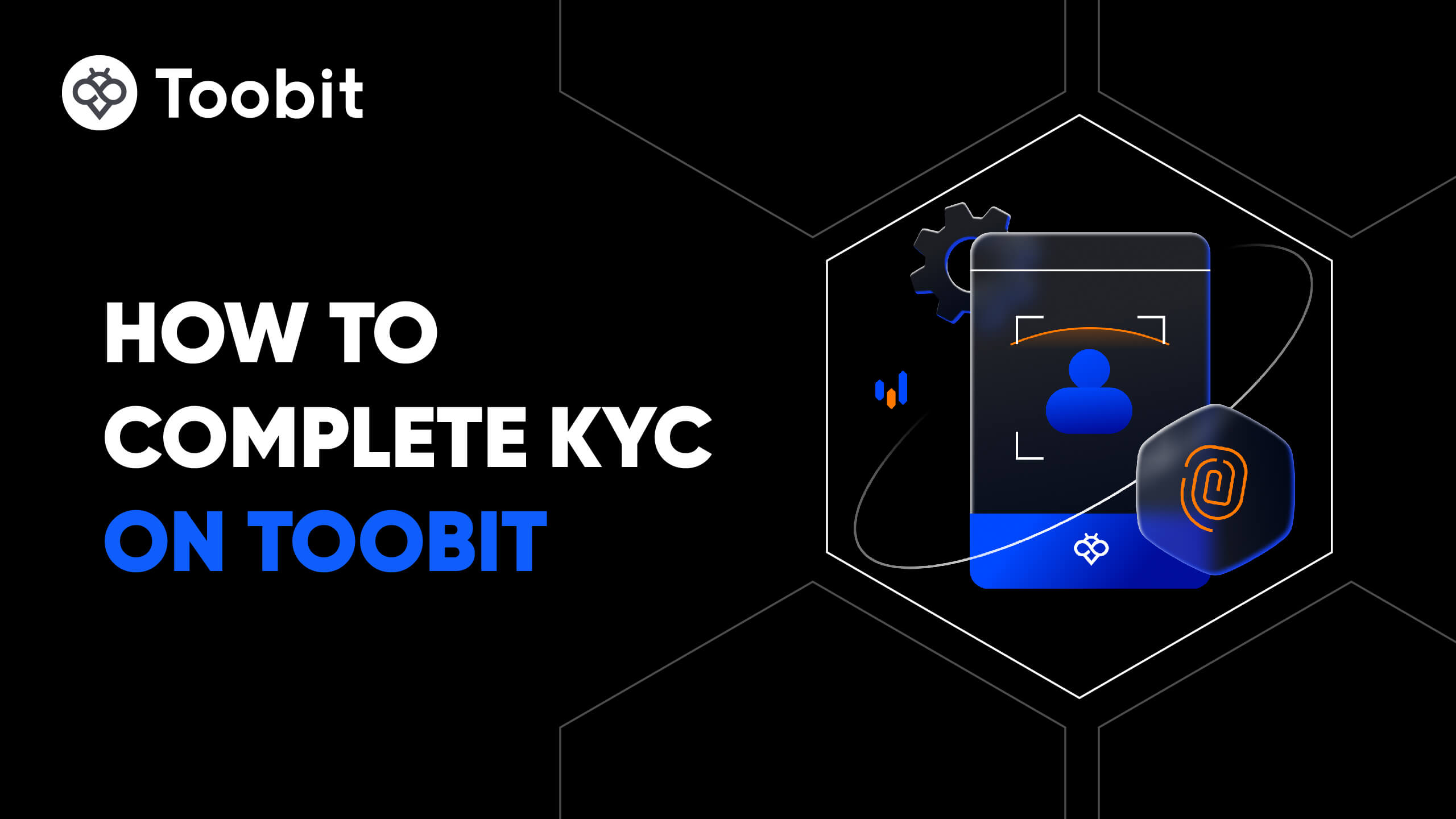--USD+0.00%1D
截至今日 --(UTC+0),Bitcoin (BTC) 在 undefined 的價格為 -- USD。
Bitcoin兌USD價格實時走勢圖(BTC/USD)
Bitcoin 市場資訊
價格表現(24小時)
24小時
24小時最低價 --
24小時最高價 --
歷史最高價
126,198.06960343386
價格變化(24小時)
+0.00%
價格變化(7日)
--
市值排名
#1
市值
1,716,195,305,265.2676
24小時成交量
46.23B
流通供應量
19.96M
最大供應量
21.00M
總供應量
19.96M
鏈接
Bitcoin 即時價格(今日 USD)
即時 Bitcoin 價格為 --,目前市值為 1,716,195,305,265.2676。Bitcoin 價格在過去 24 小時上漲了 0.00%,24 小時交易量為 46,231,595,429.84657。BTC/USD(BTC 對 USD)兌換率會即時更新。
1 個 BTC 現值多少 ?
目前,Bitcoin (BTC) 對 的價格為 --。你現在可以用 USD 購買 1 個 BTC。在過去 24 小時內,最高的 BTC 對 USD 價格為 --,最低的 BTC 對 USD 價格為 --。
關於 Bitcoin(BTC)
比特幣,這種具有開創性的去中心化加密貨幣,於2008年誕生,由一位神秘的人物「中本聰」掌舵。自 2009 年推出交易以來,比特幣徹底改變了我們對貨幣和交易的看法。想想這樣一個世界,您可以直接發送和接收付款,而無需銀行或中間人。這就是比特幣的力量──一種點對點的虛擬貨幣,將控制權重新交回人民手中。儘管在比特幣之前可能還有其他去中心化貨幣的想法,但比特幣是第一個成功實施並被廣泛採用的貨幣。加入比特幣革命,親身體驗金融的未來。
Bitcoin 價格歷史
時間
價格變化
最低價格
最高價格
24h
+0.00%
--
--
0d
+0%
$0
$0
0d
+0%
$0
$0
0d
+0%
$0
$0
為什麼 Bitcoin 的價格總是波動?
哪些因素會影響 Bitcoin 價格的表現?
全球 Bitcoin 價格
目前 Bitcoin 在其他貨幣中的價值是多少?最後更新時間:--(UTC+0)。
如何購買 Bitcoin
建立你的免費 Toobit 帳戶
使用你的電子郵件地址/手機號碼與居住國家在 Toobit 註冊,並建立強密碼來保護你的帳戶。
驗證你的身份
輸入你的個人資料並上傳有效的照片身份證件來驗證你的身份。
新增付款方式並購買 Bitcoin(BTC)
在驗證您的 Toobit 帳戶後新增信用卡 / 金融卡或銀行帳戶。使用各種付款方式在 Toobit 上購買 Bitcoin。
交易 BTC 永續合約
成功註冊 Toobit 並購買 USDT 或 BTC 代幣後,您即可開始交易衍生品,包括 BTC 合約與槓桿交易,以提升收益。
透過跟隨專業交易員參與 BTC 跟單交易。
註冊 Toobit 並成功購買 USDT 或 BTC 代幣後,您也可以開始跟單交易,關注專業交易員。
我可以在哪裡購買 Bitcoin?
在 Toobit 應用程式上購買加密貨幣
幾分鐘內註冊完成,即可使用信用卡或銀行轉帳購買加密貨幣
在 Toobit 交易
將你的加密貨幣充值至 Toobit,享受高流動性與低交易手續費。
影片區 — 快速驗證,快速交易

如何在 Toobit 完成身份驗證並防範詐騙
- 1.登入你的 Toobit 帳戶。
- 2.如果你是 Toobit 新用戶,請觀看我們的帳戶建立教學。
- 3.點擊導覽列右上角的個人圖示,然後點擊身份驗證頁面。
更多
比特幣 (BTC) 常見問題
誰創造了比特幣?
比特幣由化名開發者中本聰創建,他在2008年發表了比特幣白皮書。儘管中本聰的真實身份仍然未知,他們在2009年推出了第一個比特幣區塊,標誌著區塊鏈技術的誕生。自那時以來,像Gavin Andresen和GitHub上超過750名貢獻者的開發者們繼續增強和維護比特幣網絡。比特幣挖礦如何運作,什麼是“減半”?
比特幣挖礦是通過工作量證明來驗證交易和保護網絡的過程。礦工競爭解決複雜的數學難題,首先成功的礦工在區塊鏈上創建一個新區塊。作為回報,他們獲得新鑄造的比特幣作為區塊獎勵。減半是一個編程事件,大約每四年將這個獎勵減半。這種通縮機制內置於比特幣的代碼中,以控制供應並確保比特幣的總數永遠不會超過2100萬。比特幣減半何時發生?
最近一次比特幣減半發生在2024年4月20日。比特幣減半大約每四年或每挖出210,000個區塊時發生一次,這是中本聰原始設計的一部分,用於控制供應。每次減半事件將區塊獎勵減半,減緩新比特幣的創建並延長礦工的獎勵週期。這種內置機制將總供應限制在2100萬枚硬幣,幫助維持稀缺性並抑制通脹。下一次比特幣減半何時發生?
比特幣減半是一個大約每四年或每挖出210,000個區塊時發生的事件,減少新比特幣的創建速度。最近一次減半發生在2024年4月,將區塊獎勵減至每區塊3.125 BTC。下一次比特幣減半預計在2028年。目前有多少比特幣?
比特幣的最大供應量固定為2100萬枚,這是由其原始代碼設定的,以確保稀缺性並防止通脹。新比特幣通過挖礦進入流通,這是一個強大計算機驗證交易並將新區塊添加到區塊鏈的過程。挖礦獎勵大約每四年減半,減緩新幣的創建速度。截至目前,已經挖出了超過1970萬枚比特幣,剩下不到200萬枚尚未生產。這種有限的供應是比特幣常被稱為數字黃金的主要原因之一。比特幣是一項好的投資嗎?
由於BTC價格波動和市場動態的演變,比特幣通常被認為是一種高風險、高回報的投資。儘管它提供了強勁的長期回報,但仍容易受到價格劇烈波動、監管不確定性和潛在安全風險的影響。許多投資者將比特幣視為對抗通脹的對沖工具和投資組合多樣化的工具,尤其是在加密ETF的興起和機構參與增加的情況下。然而,它可能並不適合所有人。比特幣是否是一項好的投資最終取決於您的風險承受能力、財務目標和投資期限。在投資加密貨幣之前,請務必進行自己的研究並考慮諮詢持牌財務顧問。多少聰等於1 BTC?
一個比特幣 (BTC) 等於100,000,000聰。聰是以比特幣神秘創造者中本聰命名的,允許以極小的分數進行交易。這種高水平的可分性使比特幣即使在其價值隨時間上升時,仍然適用於微交易、交易和儲蓄。誰是中本聰?
中本聰是創造比特幣的化名個人或團體。他們撰寫了原始的比特幣白皮書並開發了比特幣軟件的第一個版本。儘管創立了整個加密貨幣行業,中本聰的真實身份仍然是現代技術和金融界最大的謎團之一。中本聰的遺產是什麼?
無論其身份如何,中本聰的遺產是不可否認的。他們解決了數字貨幣中長期存在的“雙重支付問題”,而不依賴於中央權威,創造了第一個成功的去中心化加密貨幣,並引發了區塊鏈和Web3革命。中本聰挖出的約110萬枚比特幣從未被花費,作為他們創造的無聲紀念碑,象徵著巨大的財富和對無信任系統的持久承諾。什麼是比特幣白皮書,為什麼它很重要?
比特幣白皮書,題為《比特幣:一種點對點的電子現金系統》,是由化名中本聰撰寫的基礎文件。於2008年10月31日發表,它概述了世界上第一個成功的去中心化加密貨幣的藍圖。該文件之所以重要,是因為它引入了一種突破性的解決方案,解決了數字貨幣中長期存在的“雙重支付問題”,消除了對可信中央權威的需求,為整個加密貨幣和區塊鏈行業奠定了基礎。什麼是比特幣彩虹圖?
比特幣彩虹圖是一種長期視覺工具,使用對數刻度來說明比特幣的歷史價格趨勢。每個彩色帶代表不同的估值區域,從藍色(低估)到紅色(高估),幫助用戶快速了解市場情緒隨時間的變化。雖然它不是用於精確的BTC價格預測,但彩虹圖提供了一種簡單的方法來根據比特幣的過去表現識別潛在的買入和賣出區域。什麼是BTC/USDT?
BTC/USDT是一個流行的交易對,反映了比特幣(BTC)和泰達幣(USDT)之間的匯率,泰達幣是一種與美元掛鉤的穩定幣。它允許交易者使用USDT買賣比特幣,提供了一種穩定且方便的方式來進入加密市場,而無需轉換為法定貨幣。BTC/USDT是Toobit等交易所中交易最活躍的交易對之一,因其高流動性和相對BTC價格穩定性而受到重視。比特幣與傳統法定貨幣有何不同?
傳統法定貨幣由中央機構(如中央銀行)發行和監管。其供應和價值可能受到政府政策和更廣泛的經濟條件的影響。相比之下,比特幣在沒有中央中介的情況下運行。它依賴於加密證明和網絡共識來驗證交易和管理發行,確保透明性、稀缺性和不可變性。比特幣與傳統金融(TradFi)之間的主要區別是什麼?
比特幣白皮書將其介紹為傳統金融的去中心化替代方案。主要區別包括: 1. 去中心化與中心化:比特幣在沒有中央銀行或中介的情況下運行在點對點網絡上。 2. 無需許可的訪問:任何人都可以使用或構建比特幣,而無需獲得批准。 3. 透明性:所有交易都公開記錄在區塊鏈上。 4. 固定供應:比特幣的總供應量限制在2100萬枚,而法定貨幣可以無限印刷。什麼是區塊鏈,為什麼它對比特幣的可信度至關重要?
區塊鏈是一個不可變的、帶有時間戳的交易分類帳,是比特幣信任模型的基礎。結構:交易被分組到區塊中,每個新區塊都以加密方式鏈接到前一個區塊,創建了一個安全的數據鏈。不可變性:一旦區塊被添加,其記錄幾乎不可能更改。這確保了透明性,防止雙重支付,並消除了對中央權威的需求。挖礦在比特幣系統中扮演什麼角色,它如何確保安全性?
挖礦是節點驗證交易和創建新區塊的競爭過程。它有兩個主要目的: 保護網絡:礦工驗證待處理的交易,將其分組到區塊中,並解決稱為工作量證明的計算密集型難題。這一過程確保區塊鏈保持防篡改和可信。 發行新比特幣:第一個解決難題的礦工將區塊添加到鏈中,並獲得新創建的比特幣(區塊獎勵)以及交易費用。這種經濟激勵促使礦工維護網絡安全。數字簽名如何保護比特幣交易並證明所有權?
數字簽名是比特幣中的基本安全機制,確保只有資金的合法所有者才能使用它們。機制:在發送比特幣時,用戶使用其私鑰為交易生成唯一的數字簽名。證明:此簽名以加密方式驗證所有權,而不透露私鑰,消除了傳統身份驗證的需求,確保交易安全且不可否認。比特幣的去中心化對治理和控制意味著什麼?
去中心化意味著沒有單一實體,如銀行、政府或公司,控制比特幣網絡。 治理:對比特幣規則的任何更改都需要大多數網絡參與者的共識,包括礦工、節點和開發者。 控制:由工作量證明保護的分佈式分類帳確保沒有人可以隨意增加貨幣供應、逆轉交易或關閉網絡。這支撐了比特幣作為一種抗審查貨幣的價值。比特幣白皮書如何處理匿名性概念?比特幣真的匿名嗎?
比特幣白皮書通過使用公鑰(比特幣地址)解釋了匿名性,但指出這種匿名性是有限的。 假名性:交易是公開的,但只顯示比特幣地址,而不是現實世界的身份。因此,用戶是使用假名而不是完全匿名。 限制:如果一個地址曾經與某人相關聯,則該地址的所有過去和未來交易都可以被追踪。比特幣設計上是透明的,並非完全匿名。比特幣是一個好的價值儲存手段嗎,為什麼它被稱為“數字黃金”?
儘管比特幣白皮書將其呈現為一種電子現金系統,但比特幣的特性——如耐久性、可攜性、可分性、均一性、有限供應和廣泛接受性,使許多人認為它是數字黃金。其固定的通縮供應使其對通脹具有抵抗力,這是價值儲存的關鍵特徵。這一觀點已成為一個核心投資論點,將比特幣定位為對傳統金融系統的潛在對沖和現代投資組合中的核心資產。比特幣網絡的長期安全性如何維持?
比特幣的長期安全性通過幾個關鍵機制來維持。 1. 工作量證明:這使得對網絡的攻擊在計算上不可行。 2. 經濟激勵:礦工因誠實參與而獲得獎勵,促進網絡完整性。 3. 分佈式網絡:其去中心化結構消除了任何單一故障點。 4. 密碼學:強大的加密算法保護所有交易,並且只要誠實的節點集體控制的計算能力超過潛在攻擊者,網絡就保持安全。比特幣能否擴展成為日常交易的全球支付系統?
原始白皮書承認擴展可能是一個挑戰。它建議大多數交易可以通過單獨的支付通道在鏈下進行,主區塊鏈用於結算這些通道。這一概念為像閃電網絡這樣的第二層解決方案奠定了基礎,這些解決方案能夠實現快速、低成本的微交易,並幫助解決比特幣作為數字現金的可擴展性問題。列出的BTC價格更新的時區是什麼?
頁面上顯示的BTC價格使用UTC(協調世界時)實時更新。這確保了全球用戶的一致性。如果您位於不同的時區,您的當地時間可能會有所不同——在參考最新的比特幣價格之前,請檢查時間戳。為什麼比特幣價格在不同交易所之間可能略有不同?
由於每個交易所都有自己的訂單簿、流動性和交易量,比特幣價格可能會在不同平台之間略有不同。這種差異源於每個交易所的供需動態,以及可能適用於某些交易對的費用或延遲。顯示的BTC價格可以用於轉換其他貨幣(例如EUR、JPY)嗎?
顯示的價格以美元計價。如果您需要獲得其他法定貨幣(例如EUR、JPY)的等值比特幣價格,您需要應用當前的美元對您貨幣的匯率——或者使用貨幣轉換工具進行準確的轉換。Toobit上的實時比特幣價格多久更新一次?
實時比特幣價格數據流會隨著交易的發生不斷刷新,以反映最新的市場活動。這確保用戶看到的是接近實時的價格變化,而不是延遲或過時的報價。顯示的BTC價格是否包含交易費用或滑點?
不,顯示的BTC價格代表1比特幣(BTC)的市場價格。它不包括任何交易費用、網絡費用或潛在的滑點。實際成本可能會根據訂單類型、支付方式或當前網絡條件而有所不同。當我查看比特幣價格頁面時,“最後價格”和“市值”有什麼區別?
“最後價格”指的是比特幣的最近交易價格(即有人最後支付的價格)。“市值”是所有流通中的比特幣的總價值(當前供應量×最後價格),為您提供比特幣總市場估值的概覽。為什麼BTC價格每秒都在變化?
BTC價格不斷變化,因為比特幣在全球交易所24/7交易。每筆買賣訂單都會影響供需,直接使比特幣價格實時上升或下降。與股票不同,沒有收盤鈴。由於比特幣的總供應量固定為21,000,000 BTC,價格波動純粹由市場行為、流動性、新聞和宏觀經濟因素驅動。哪些因素對比特幣價格的長期影響最大?
長期比特幣價格趨勢主要由以下因素驅動:比特幣減半週期機構採用宏觀經濟條件(通脹、利率)監管發展網絡安全和哈希率由於比特幣的總供應量僅限於21,000,000 BTC,稀缺性在長期內推動BTC價格上升中發揮了重要作用。如何計算不同交易所的BTC價格?
您在大多數平台上看到的BTC價格是多個交易所價格的加權平均值,按交易量加權。然而,由於流動性差異和地區需求,比特幣價格在平台之間可能略有不同。無論交易所如何,流通的資產都是相同的比特幣,最大供應量為21,000,000 BTC。為什麼比特幣價格對新聞事件反應如此強烈?
比特幣對以下因素高度敏感:ETF批准政府法規利率決定交易所黑客或崩潰機構投資公告由於BTC價格反映了即時市場情緒,即使是一個重大頭條新聞也可能引發大幅價格波動。21,000,000 BTC的有限供應放大了這些反應,因為無法創建新幣以應對需求。比特幣價格可以被操縱嗎?
短期BTC價格波動可能受到以下因素的影響:大型“鯨魚”交易做市商流動性衍生品清算協調的交易行為然而,隨著比特幣市值的增長和全球參與的擴大,長期操縱變得越來越困難。21,000,000 BTC的有限供應也限制了資產的人工通脹。為什麼在高槓桿清算期間BTC價格經常下跌?
當交易者使用槓桿時,即使是小幅的比特幣價格波動也可能觸發強制清算。在大型清算事件期間,大量市場賣單湧入交易所,導致BTC價格暫時急劇下跌。這不影響比特幣的總供應量21,000,000 BTC,只影響其短期市場價值。與其總供應量相比,比特幣價格仍被低估嗎?
許多長期投資者認為比特幣仍被低估,因為:全球採用仍處於早期階段法定貨幣通脹持續上升機構曝光正在擴大供應量僅限於21,000,000 BTC從基於稀缺性的估值模型來看,隨著需求的持續增長而供應保持固定,BTC價格可能會顯著上升。比特幣與傳統金融 (TradFi) 的主要區別是什麼?
比特幣白皮書將其介紹為傳統金融的去中心化替代方案。主要區別包括: 1. 去中心化與中心化:比特幣在無需中央銀行或中介的點對點網絡上運行。 2. 無需許可的訪問:任何人都可以使用或構建比特幣,無需批准。 3. 透明性:所有交易都公開記錄在區塊鏈上。 4. 固定供應:比特幣的總供應量上限為2100萬,與可以無限印刷的法定貨幣不同。什麼是區塊鏈,為什麼它對比特幣的可信度至關重要?
區塊鏈是一個不可變的、帶有時間戳的交易分類帳,是比特幣信任模型的基礎。結構:交易被分組到區塊中,每個新區塊都以加密方式鏈接到前一個區塊,形成一個安全的數據鏈。不可變性:一旦區塊被添加,其記錄幾乎不可能更改。這確保了透明性,防止雙重支付,並消除了對中央權威的需求。挖礦在比特幣系統中的角色是什麼,以及它如何確保安全性?
挖礦是節點驗證交易並創建新區塊的競爭過程。它有兩個主要目的:保護網絡安全:礦工驗證待處理的交易,將它們組成區塊,並解決稱為工作量證明的計算密集型難題。這個過程確保區塊鏈保持防篡改和可信賴。發行新比特幣:第一個解決難題的礦工將區塊添加到鏈中,並獲得新創建的比特幣(區塊獎勵)以及交易費用。這種經濟激勵促使礦工維護網絡安全。數位簽章如何保障比特幣交易安全並證明所有權?
數位簽章是比特幣中的基本安全機制,確保只有合法的資金擁有者才能使用資金。機制:在發送比特幣時,用戶使用其私鑰為交易生成唯一的數位簽章。證明:此簽章以加密方式驗證所有權而不揭示私鑰,消除了傳統身份驗證的需求,確保交易安全且不可否認。比特幣的去中心化對治理和控制意味著什麼?
去中心化意味著沒有單一實體,如銀行、政府或公司,能夠控制比特幣網絡。 治理:對比特幣規則的任何更改都需要獲得包括礦工、節點和開發者在內的大多數網絡參與者的共識。 控制:由工作量證明保護的分佈式賬本確保沒有人可以隨意增加貨幣供應、逆轉交易或關閉網絡。這支撐了比特幣作為一種抗審查貨幣的價值。比特幣白皮書如何處理匿名性概念?比特幣真的匿名嗎?
比特幣白皮書通過使用公鑰(比特幣地址)來解釋匿名性,但指出這種匿名性是有限的。假名性:交易是公開的,但僅顯示比特幣地址,而非現實世界的身份。因此,用戶是使用假名而非完全匿名。限制:如果某個地址與某人相關聯,則該地址的所有過去和未來交易都可以被追蹤。比特幣的設計是透明的,並非完全匿名。比特幣是一個好的價值儲存方式嗎,為什麼它被稱為「數位黃金」?
雖然比特幣白皮書將其呈現為一種電子現金系統,但比特幣的特性——如耐久性、可攜性、可分性、均一性、供應有限和廣泛接受性,使許多人將其視為數位黃金。其固定的、通縮的供應使其對抗通脹,這是價值儲存的一個關鍵特徵。這一觀點已成為一個核心投資論點,將比特幣定位為傳統金融系統的潛在對沖工具和現代投資組合中的核心資產。比特幣網絡的長期安全性如何維持?
比特幣的長期安全性是通過幾個關鍵機制來維持的。1. 工作量證明:這使得對網絡的攻擊在計算上不可行。2. 經濟激勵:礦工因誠實參與而獲得獎勵,促進網絡完整性。3. 分佈式網絡:其去中心化結構消除了任何單一故障點。4. 密碼學:強大的加密算法保護所有交易,並且只要誠實節點集體控制的計算能力超過潛在攻擊者,網絡就保持安全。比特幣能否擴展成為日常交易的全球支付系統?
原始白皮書承認擴展可能是一個挑戰。它建議大多數交易可以通過單獨的支付通道在鏈下進行,而主區塊鏈用於結算這些通道。這一概念為像閃電網絡這樣的第二層解決方案奠定了基礎,這些解決方案能夠實現快速、低成本的小額交易,並幫助解決比特幣作為數字現金的可擴展性問題。
BTC/USD 價格計算器
BTC
USD
1 BTC = -- USD。當前將 1 Bitcoin (BTC) 兌換為 undefined 的價格為 --。匯率僅供參考。剛剛更新。
Toobit 致力於提供相較於多數主流交易平台更低的交易手續費。您的 VIP 等級越高,享有的費率就越優惠。
幣種排行
暫無數據


